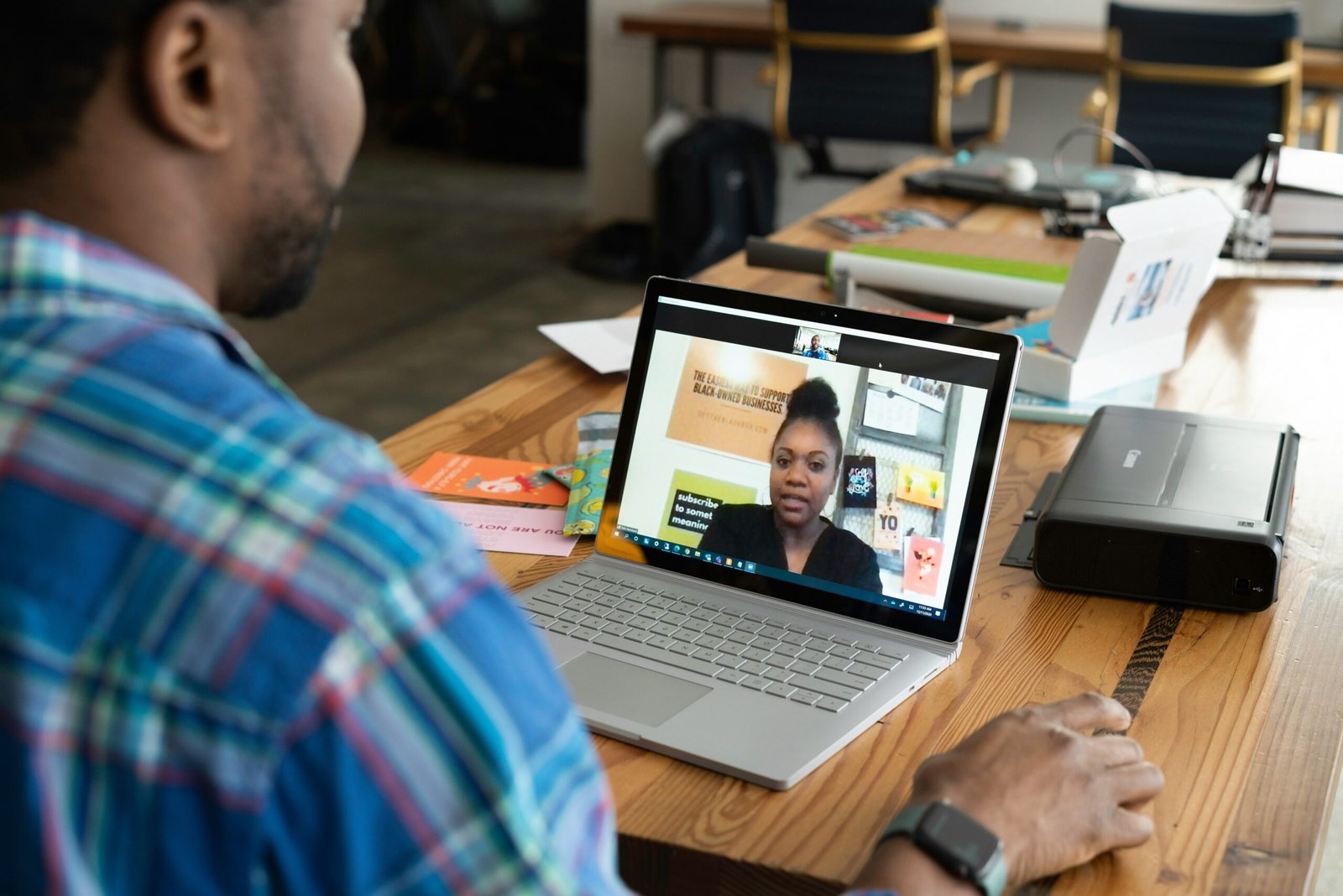
One of the most significant trends in meetings is the shift towards virtual and remote collaboration. With the rise of video conferencing platforms and collaboration tools, teams no longer need to be physically present in the same location to hold productive meetings. This has revolutionized the way businesses operate, allowing for greater flexibility and efficiency.
Virtual meetings offer several advantages. They eliminate the need for travel, saving both time and money. Teams can connect from different parts of the world, enabling global collaboration and breaking down geographical barriers. Additionally, virtual meetings can be recorded, allowing participants to revisit discussions and ensuring that important information is not lost.
Another emerging trend in meetings is the incorporation of artificial intelligence (AI) and machine learning. These technologies are being used to enhance productivity and streamline meeting processes. AI-powered virtual assistants can schedule meetings, send reminders, and even take notes during discussions. Machine learning algorithms can analyze meeting data to identify patterns and trends, providing valuable insights for decision-making.
When it comes to office real estate, the traditional cubicle-filled layout is giving way to more flexible and collaborative spaces. Open-plan offices, with their shared workstations and communal areas, are becoming increasingly popular. These layouts promote collaboration and communication among employees, fostering a sense of teamwork and creativity.
Furthermore, companies are recognizing the importance of creating a comfortable and inspiring work environment. Office designs now focus on incorporating natural elements, such as greenery and natural light, to improve employee well-being and productivity. Ergonomic furniture and wellness rooms are also being introduced to support employee health and work-life balance.
The rise of remote work has also led to the emergence of co-working spaces and shared offices. These flexible workspaces provide individuals and small teams with access to professional amenities and a network of like-minded professionals. Co-working spaces offer the benefits of a traditional office, such as meeting rooms and networking opportunities, without the long-term commitment or high costs.
In conclusion, the workplace is undergoing a significant transformation driven by technology and changing work dynamics. Virtual meetings and AI-powered tools are revolutionizing how teams collaborate, while office real estate is evolving to create more flexible and inspiring spaces. As the future of work continues to evolve, it is essential for businesses to adapt and embrace these trends to stay competitive and meet the needs of their employees.
1. Flexible Meeting Spaces
Gone are the days of stuffy conference rooms with long, rectangular tables and uncomfortable chairs. Today, companies are embracing the concept of flexible meeting spaces that cater to different types of meetings and work styles.
One popular trend is the creation of collaborative areas that encourage brainstorming and teamwork. These spaces are equipped with comfortable seating, whiteboards, and technology tools to facilitate collaboration and creativity. They provide a refreshing change from the traditional meeting room and foster a more relaxed and informal atmosphere.
Another emerging trend is the inclusion of outdoor meeting spaces. Companies are recognizing the benefits of connecting with nature and providing employees with the option to hold meetings outside. These outdoor spaces not only provide a breath of fresh air but also offer a change of scenery and a break from the monotony of indoor meetings.
Moreover, companies are now incorporating flexible furniture and layouts in their meeting spaces. Instead of fixed tables and chairs, they are opting for modular furniture that can be easily rearranged to accommodate different meeting sizes and purposes. This flexibility allows for a more dynamic and adaptable environment, where employees can easily transition from large presentations to small group discussions.
In addition to the physical design, technology is playing a crucial role in creating flexible meeting spaces. Companies are investing in state-of-the-art audiovisual equipment, video conferencing systems, and interactive displays to enhance communication and collaboration. These technological advancements enable remote participants to join meetings seamlessly and facilitate the sharing of ideas and information.
Furthermore, companies are also incorporating amenities and services into their meeting spaces to enhance the overall experience. These may include on-site catering, coffee stations, and comfortable lounge areas where participants can relax and recharge during breaks. By providing these additional features, companies are not only prioritizing the comfort and well-being of their employees but also creating a more inviting and productive meeting environment.
Overall, the shift towards flexible meeting spaces reflects the changing dynamics of the modern workplace. Companies are recognizing the importance of creating versatile and engaging spaces that foster collaboration, creativity, and productivity. By embracing these trends, organizations can create a more inclusive and innovative meeting culture that drives success and growth.
2. Virtual Meetings and Remote Work
The rise of technology has revolutionized the way we work and communicate. Virtual meetings have become increasingly popular, allowing teams to connect and collaborate regardless of their physical location. With video conferencing tools and collaboration platforms, employees can attend meetings from the comfort of their own homes or while traveling.
Remote work has also gained traction in recent years, with companies embracing the flexibility it offers. Employees can now work from anywhere, reducing the need for a dedicated office space. This trend has led to the rise of coworking spaces, where individuals from different companies share a common work area. Coworking spaces provide a sense of community and collaboration, allowing professionals to network and exchange ideas.
Furthermore, remote work has proven to be beneficial not only for employees but also for employers. It allows companies to tap into a global talent pool, enabling them to hire the best candidates regardless of their geographical location. This opens up opportunities for diversity and inclusion in the workplace, as companies can now build teams with individuals from different backgrounds and cultures.
The flexibility of remote work also contributes to improved work-life balance. Employees have the freedom to set their own schedules and work in environments that suit their preferences. This can lead to increased productivity and job satisfaction, as individuals are able to better manage their personal and professional responsibilities.
However, remote work does come with its challenges. Communication and collaboration can be more difficult when team members are spread across different locations. It requires effective communication tools and strategies to ensure that everyone is on the same page and working towards common goals.
Additionally, remote work can sometimes lead to feelings of isolation and disconnection. Without the physical presence of colleagues, employees may miss out on the social interactions and informal conversations that often contribute to a positive work environment. It is important for companies to foster a sense of belonging and community among remote workers through regular check-ins, team-building activities, and virtual social events.
In conclusion, virtual meetings and remote work have transformed the way we work and communicate. They offer flexibility, global opportunities, and improved work-life balance. However, it is crucial for companies to address the challenges that come with remote work and create a supportive and inclusive work environment for all employees, regardless of their location.
Alongside open office layouts and flexible workstations, another aspect of office real estate optimization is the integration of technology. As companies embrace digital transformation, they are incorporating smart office solutions to streamline operations and enhance employee experience.
One example of technology integration is the use of sensor systems to monitor space utilization. By installing sensors throughout the office, companies can collect data on how different areas are being utilized. This data can then inform decisions on space allocation and help identify areas that are underutilized or overcrowded. For example, if the data shows that a particular meeting room is consistently empty, it may be repurposed into a more useful space.
Furthermore, technology can also be used to enhance employee productivity and well-being. For instance, companies are implementing smart lighting systems that adjust brightness and color temperature based on natural light levels and employee preferences. This not only creates a more comfortable work environment but also reduces energy consumption.
Additionally, companies are leveraging technology to enable flexible and remote work. Cloud-based collaboration tools and video conferencing software allow employees to work from anywhere while staying connected with their colleagues. This not only provides employees with more flexibility but also reduces the need for physical office space.
In conclusion, the optimization of office real estate is a multifaceted process that involves rethinking office layouts, implementing flexible workstations, and integrating technology. By embracing these trends, companies can create more collaborative and adaptable work environments while maximizing space utilization and enhancing employee productivity.
































